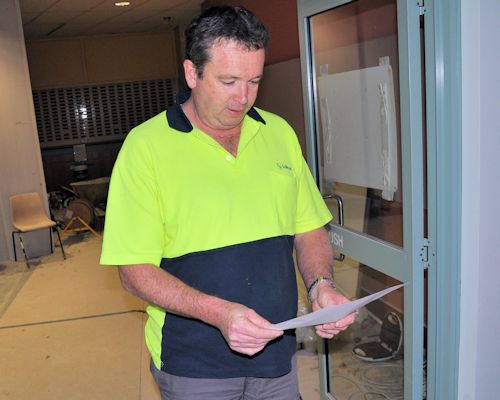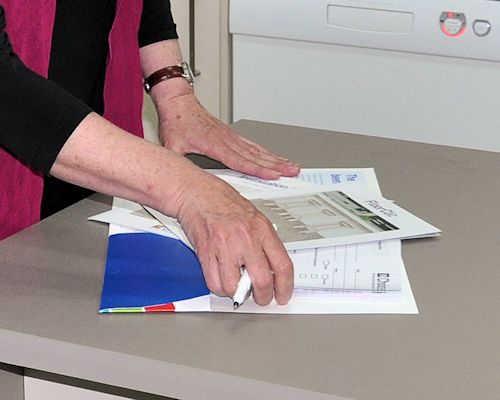Documentation
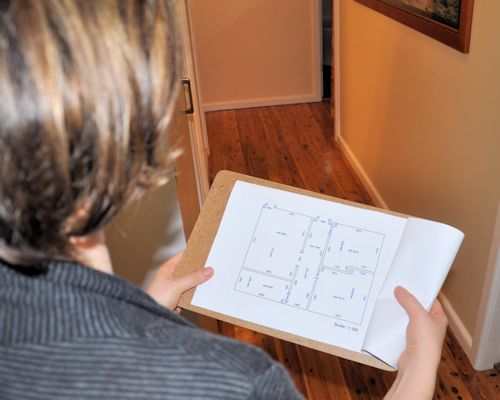 Audio for slide 1 (mp3 |6|KB)
Audio for slide 1 (mp3 |6|KB)
In the unit Planning and costing we talked about the sorts of documents you need to take with you when you go out to the site on installation day.
The main document is the floor covering plan, which sets out the details relating to how the flooring will be installed.

 Audio for slide 2 (mp3 |6|KB)
Audio for slide 2 (mp3 |6|KB)
You should always show the client the floor covering plan before you start a new project.
This gives them the opportunity to identify any issues that they may not be happy with, or weren't expecting, before it's too late to make any changes.
Some companies require the client to formally approve the plan by signing a copy.

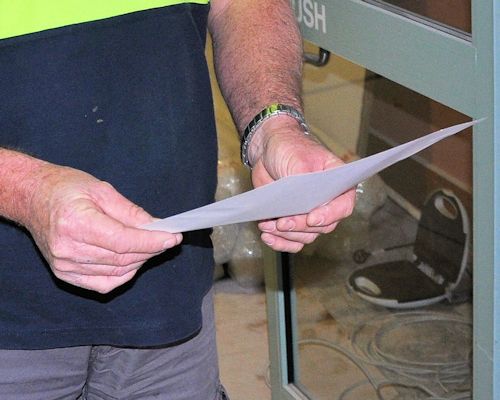 Audio for slide 4 (mp3 |6|KB)
Audio for slide 4 (mp3 |6|KB)
The job sheet should include:
- jobsite address and contact details of the person in charge
- brand names and descriptions of the floor coverings to be laid
- details of other products to be used, including underlay, adhesive and trims
- seam placement and other installation details
- subfloor preparation required
- furniture and appliances to be moved
- unusual site conditions or potential problems.

 Audio for slide 5 (mp3 |6|KB)
Audio for slide 5 (mp3 |6|KB)
Warranties and maintenance advice
Most flooring installation companies provide their clients with a written warranty as part of the contract documentation.
The warranty sets out the conditions under which the company will come back and fix problems that have occurred due to poor quality workmanship or faulty materials.

 Audio for slide 7 (mp3 |6|KB)
Audio for slide 7 (mp3 |6|KB)
For example, it is the client's responsibility to follow the manufacturer's advice on how to maintain the floor and keep it in good condition.

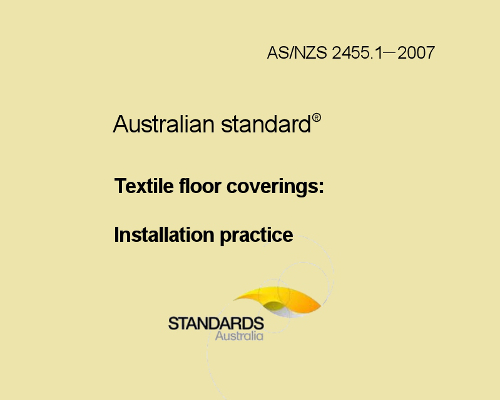 Audio for slide 8 (mp3 |6|KB)
Audio for slide 8 (mp3 |6|KB)
Australian Standards
Although you may not carry copies of particular Australian Standards with you while on the job, they are still extremely important documents, and are likely to form part of the contract between the client and your company.
The two Australian Standards we will refer to throughout this learner guide are:
- AS/NZS 2455.1-2007 - Textile floor coverings: Installation practice
- AS 4288-2003 - Soft underlays for textile floor coverings.






